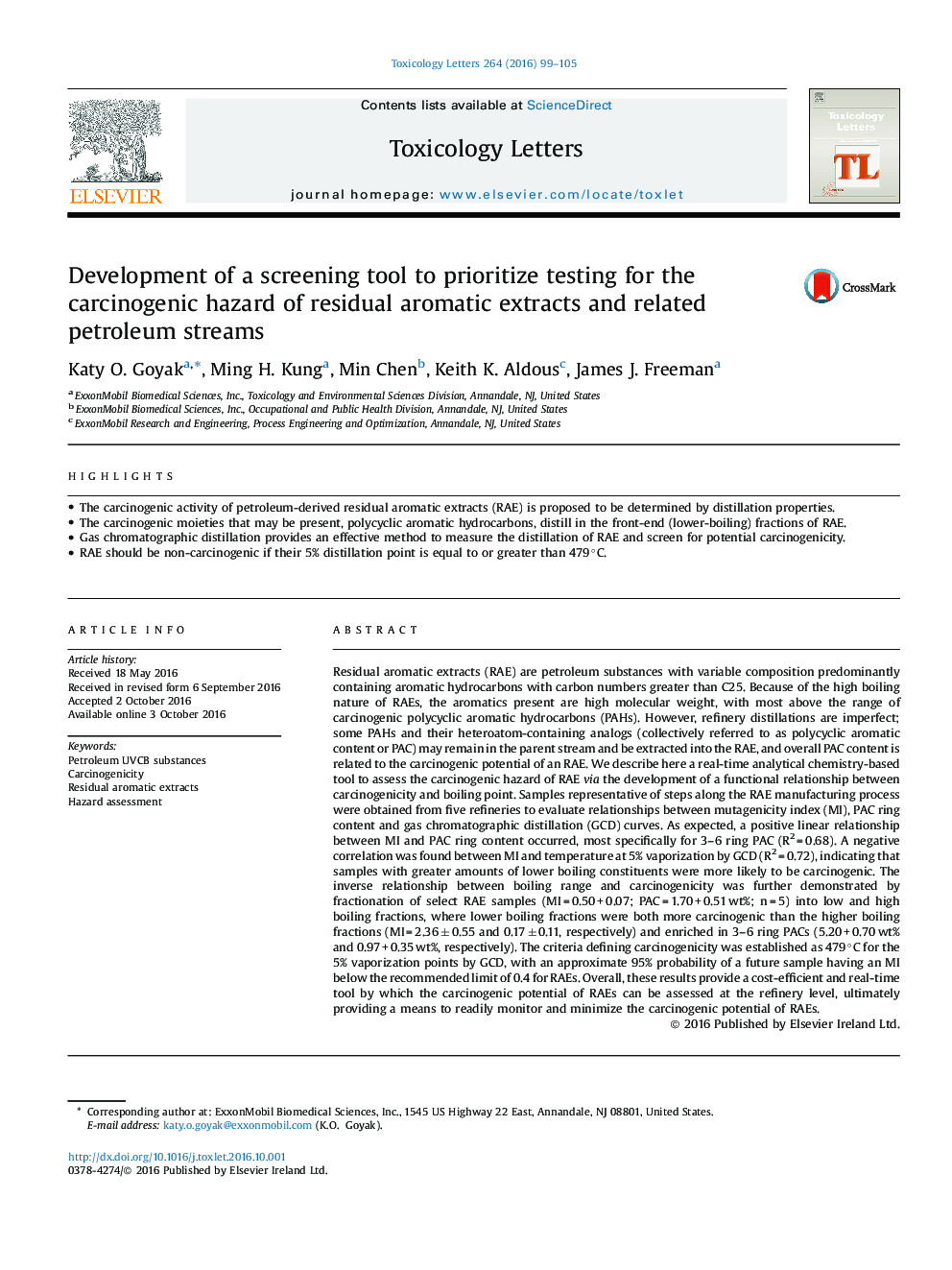| کد مقاله | کد نشریه | سال انتشار | مقاله انگلیسی | نسخه تمام متن |
|---|---|---|---|---|
| 5562292 | 1562609 | 2016 | 7 صفحه PDF | دانلود رایگان |
- The carcinogenic activity of petroleum-derived residual aromatic extracts (RAE) is proposed to be determined by distillation properties.
- The carcinogenic moieties that may be present, polycyclic aromatic hydrocarbons, distill in the front-end (lower-boiling) fractions of RAE.
- Gas chromatographic distillation provides an effective method to measure the distillation of RAE and screen for potential carcinogenicity.
- RAE should be non-carcinogenic if their 5% distillation point is equal to or greater than 479 °C.
Residual aromatic extracts (RAE) are petroleum substances with variable composition predominantly containing aromatic hydrocarbons with carbon numbers greater than C25. Because of the high boiling nature of RAEs, the aromatics present are high molecular weight, with most above the range of carcinogenic polycyclic aromatic hydrocarbons (PAHs). However, refinery distillations are imperfect; some PAHs and their heteroatom-containing analogs (collectively referred to as polycyclic aromatic content or PAC) may remain in the parent stream and be extracted into the RAE, and overall PAC content is related to the carcinogenic potential of an RAE. We describe here a real-time analytical chemistry-based tool to assess the carcinogenic hazard of RAE via the development of a functional relationship between carcinogenicity and boiling point. Samples representative of steps along the RAE manufacturing process were obtained from five refineries to evaluate relationships between mutagenicity index (MI), PAC ring content and gas chromatographic distillation (GCD) curves. As expected, a positive linear relationship between MI and PAC ring content occurred, most specifically for 3-6 ring PAC (R2 = 0.68). A negative correlation was found between MI and temperature at 5% vaporization by GCD (R2 = 0.72), indicating that samples with greater amounts of lower boiling constituents were more likely to be carcinogenic. The inverse relationship between boiling range and carcinogenicity was further demonstrated by fractionation of select RAE samples (MI = 0.50 + 0.07; PAC = 1.70 + 0.51 wt%; n = 5) into low and high boiling fractions, where lower boiling fractions were both more carcinogenic than the higher boiling fractions (MI = 2.36 ± 0.55 and 0.17 ± 0.11, respectively) and enriched in 3-6 ring PACs (5.20 + 0.70 wt% and 0.97 + 0.35 wt%, respectively). The criteria defining carcinogenicity was established as 479 °C for the 5% vaporization points by GCD, with an approximate 95% probability of a future sample having an MI below the recommended limit of 0.4 for RAEs. Overall, these results provide a cost-efficient and real-time tool by which the carcinogenic potential of RAEs can be assessed at the refinery level, ultimately providing a means to readily monitor and minimize the carcinogenic potential of RAEs.
Journal: Toxicology Letters - Volume 264, 15 December 2016, Pages 99-105
